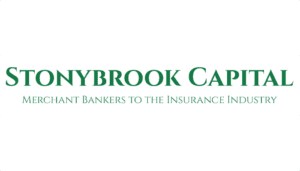Is your board looking at their own diversity?

It’s no longer sufficient for insurance industry board members to talk about diversity across the organization — boards need to actively look at their own diversity and address any gaps, KPMG suggested in a recent thought leadership piece.
“To build a culture of success, boards need to recognize biases and tackle them head on,” KPMG said in The road ahead for insurance organizations: Key considerations for insurance boards. “Boards should assess their own diversity and inclusivity and address and gaps – this could include diversity in board recruitment and HR processes.”
Especially post-COVID-19, work-life culture is under the microscope and has changed the way many companies view talent, support employees and develop leadership. While hiring and career discussions used to focus on compensation and succession planning, they’ve broadened to include learning paths, diversity, equity and inclusion (DEI), mental health, as well as child and elder care obligations.
“Recent employee and organizational experiences have provided the right set of circumstances to bring more benefits and opportunities to various talent groups by evaluating hiring and recruitment processes and adapting to hybrid and/or remote work opportunities to better serve their workforce,” KPMG said. “Board members of insurance organizations need to ensure that the progress made on diversity and inclusion doesn’t fade and is factored into their hiring strategies going forward.”
Related: Top 3 ways Canada’s insurance brokerages promote diversity
As the voice of the organization, the board should live the same culture they’re working to promote within the organization, KPMG said. To do so, here are some key questions to ask:
What key performance indicators should the organization embed to ensure hiring and talent attraction are free of organizational biases?
What can we do from a strategic perspective to ensure our organization is attractive to top talent?
What can we do as a board to ensure that progress made in diversity won’t be lost?
What concrete steps are we taking as an organization to support diversity and inclusion in all areas of our business?
Another factor to consider is environmental, social and corporate governance (ESG) principles. By embracing ESG, boards — and more specifically audit committees — will have a responsibility to oversee their organization’s climate risk and ESG reporting. This means they’ll need to ensure management teams are closely monitoring regulatory developments and updating the board in a timely manner.
Related: How ESG offers a competitive advantage
For example, the Office of the Superintendent of Financial Institutions’ (OSFI) B-15 Guideline, Climate Risk Management, requires insurers of a certain size to demonstrate and disclose details on governance, strategy, risk management and metrics, as well as targets regarding climate risk.
In addition, the first two IFRS Sustainability Disclosure Standards have been published and become effective Jan. 1, 2024 (they’re still considered voluntary until mandated by jurisdictional regulators in Canada).
It’s important for board members to understand the requirements and related timelines for implementation of these new standards, which are an important part of the emerging suite of sustainability reporting requirements.
And while voluntary reports may have previously received some board-level review, the increased scrutiny of these new mandatory disclosures will require more formal governance and oversight, KPMG said. ESG disclosure needs to be considered alongside the organization’s existing reporting governance and control programs.
Feature image by iStock.com/VioletaStoimenova




